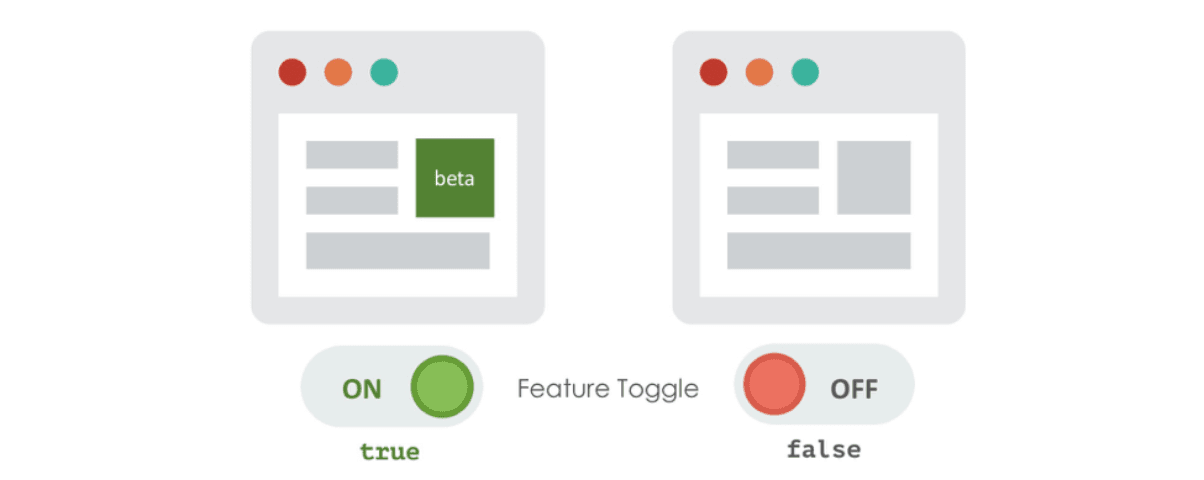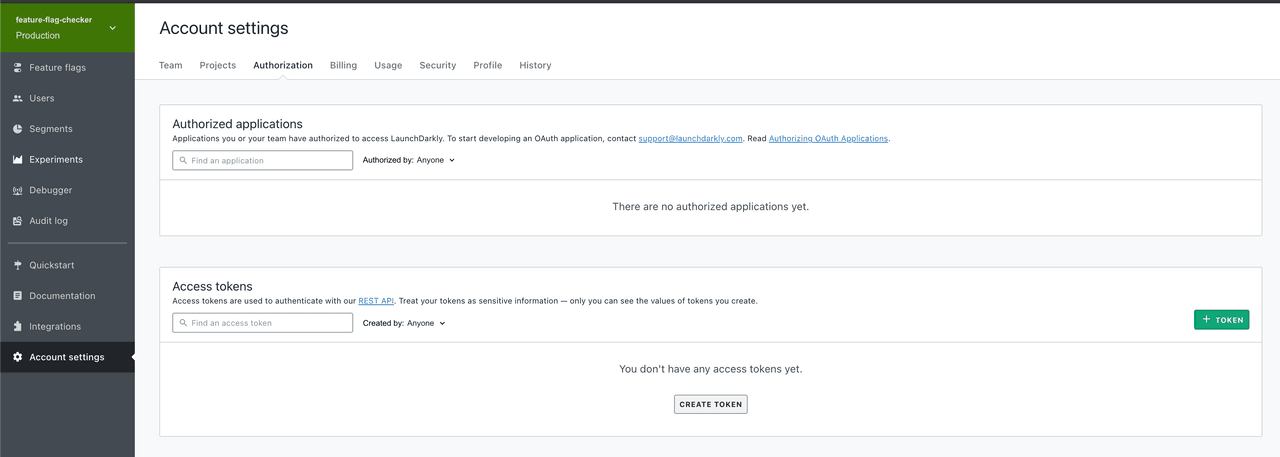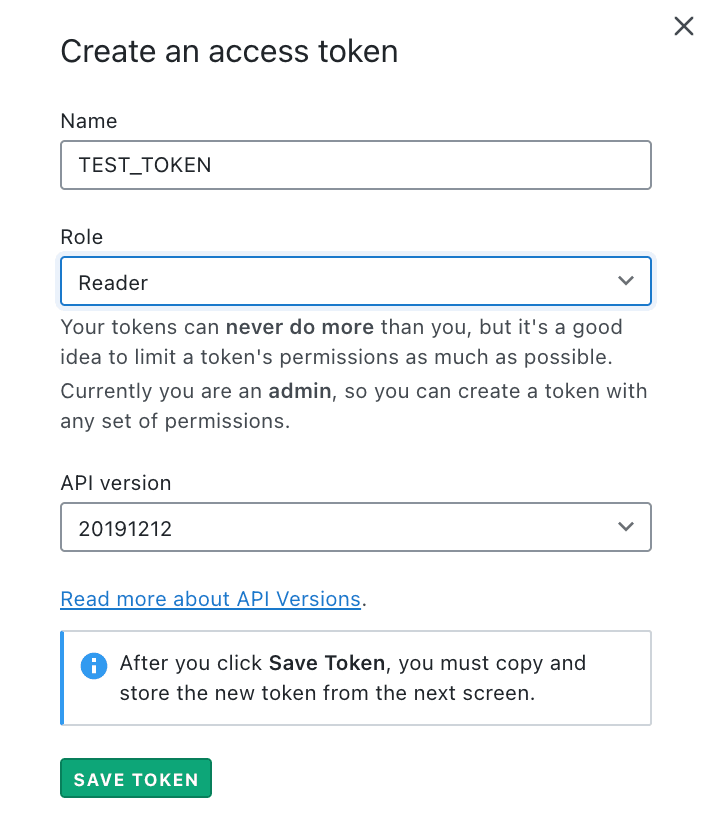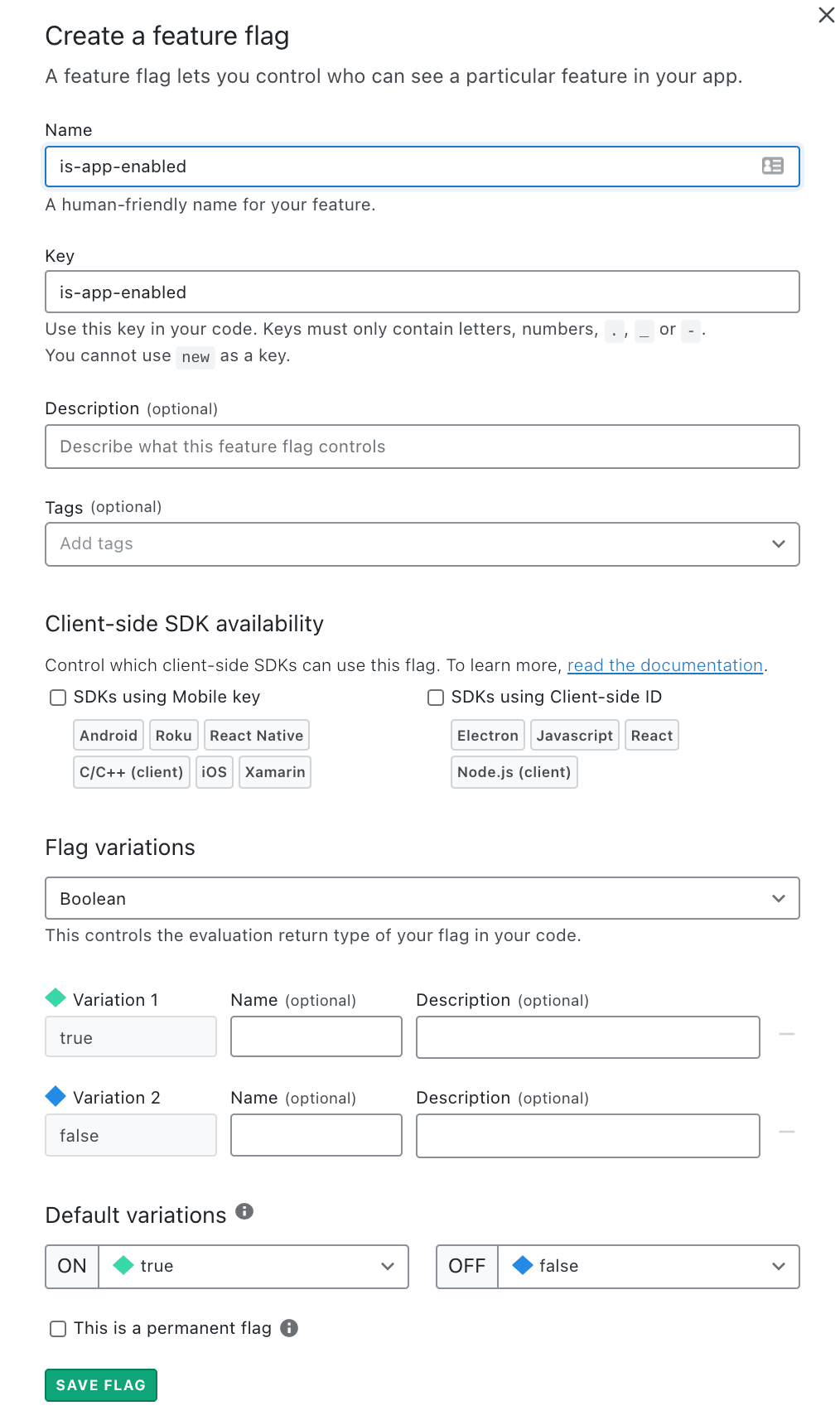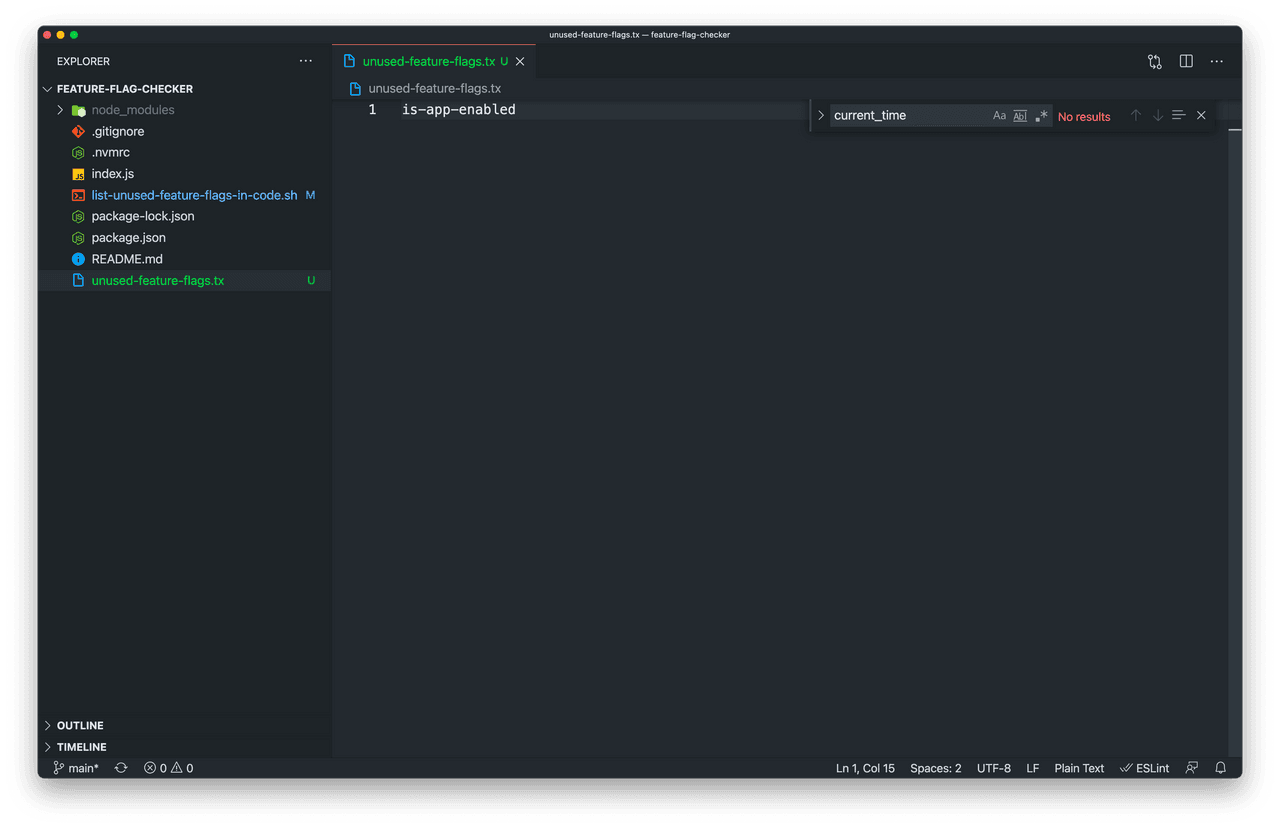mkdir my-project
cd my-project
npm init -yTL;DR; You can start using list-unused-feature-flags-in-code.sh script in your project using LaunchDarkly and you will get a list of feature-flags to be removed. Also, feel free to check the GitHub repository "feature-flag-checker" to see the demo in action. 🎉
Introduction
Feature flag (or feature toggle) is a common concept, having different ways to integrate that into your project.
At the current time this post is written LaunchDarkly is one of the most famous platforms in market for feature flags management.
Creating some standards for feature flag usage to help with their deletion in a near future
Feature flags are quite useful and should have a time-to-live. Standards and patterns are always your friend during this journey.
To make it easier, let's define some ettiquete for feature flags usage among your codebase.
Every features should be released under a feature flag
That is a great catch. Every time you can use a feature flag to release a new feature, a large refactor in your codebase or even a transition between services, API's or a third-party integration.
That way, you'll be able to apply some progressive rollout on these changes, rolling them back if necessary.
Feature flags should start with a falsy value
This is a simple and straightforward rule. That's probably the reason why it's so hard to maintain in large codebases. Make sure you have some automation to validate that will be followed across your project.
There are several benefits in keep this rule. One of them is the ability to apply progressive rollout for your feature flags. Which means that every feature flag return true for all your users after a specific time range are also good candidates to be removed.
Feature flag management platforms are also points of failure. Make sure you are minimizing the risks involved on this integration, in case of an error, timeout or any other issue that might impact your project.
The key point here of having them with a falsy value by definition is the mindset involved in this approach. Having them as false means they will be disabled by default. So, in case of any issue during communication with the feature flag management platform, these features will be disabled for your customers.
However, the project will be up-and-running and reliability is the key at this stage. So you can work to understand what's happening and your application is still available for your users, just without the specific new feature/migration/refactory.
Defining cleanup constraints for feature flags
The first draft of that should cover few things. To keep it simple and short, let's focus on 2 topics:
- Feature flags deletion criteria
- Codebase cleanup criteria
1. Feature flags deletion criteria
At this stage, the feature flag should be removed from the feature flag management platform if is turned on for 1 or more days - up to the team/tribe/triad/company to define. After this stage, we can raise a ticket, send a message to the team responsible for that or any other approach that makes sense the most, focusing on the reality in your organization.
2. Codebase cleanup criteria
This will start as soon as the feature flag has been turned on for all the users of your app. Being more specific, after a time range your company determine as relevant or as soon as the feature was released and your team has confidence in removing it.
As soon as the feature flag release reaches the cutt-off time pre-defined, you are able to remove the feature flag from your codebase safely. After that, you might be able to remove the feature flag from the platform safely.
Creating a LaunchDarkly Feature Flags and API keys
You might need to create a LaunchDarkly account as a prerequisite for the next steps
LaunchDarkly is one of the most famous platforms in market for feature flags management. So, make sure you have a LaunchDarkly account.
At first, let's create a project in LaunchDarkly. Projects are great to define boundaries between feature flags in different applications.
In your account, create a project and copy the SDK value. That will be required for our code in NodeJS. You can find the SDK key for your specific project in https://app.launchdarkly.com/settings/projects
Let's add a alias name for our token and call it as TEST_TOKEN for now. This will be used only for reference.
So, inside the project we created we can now create our first feature flag. At this stage, let's create a feature flag and call it as is-app-enabled. Nothing else will be changes, so let's keep the default configuration as it is for now.
Now let's create a code that will consume the feature flags for this project.
Running a code using LaunchDarkly and checking for feature flags
Let's write some code! 💻 First let's create a new project by running the command npm init -y.
After that, let's install the package launchdarkly-node-server-sdk, which is the LaunchDarkly SDK for NodeJS. So that, we can check if a specific feature flag is turned on of off via code.
npm install launchdarkly-node-server-sdk --saveWith the dependency installed, let's create a file index.js. In this file, we will start a LaunchDarkly connection and check for the feature flag we created - in this case, is-app-enabled. So it will check if the feature is enabled or disabled, print the content and stop the process right after that.
| const assert = require('assert'); | |
| const LaunchDarkly = require('launchdarkly-node-server-sdk'); | |
| // Check if the variable was passed on | |
| assert(process.env.LD_SDK_KEY, 'env var "LD_SDK_KEY" should be passed to the command'); | |
| const featureFlagKey = 'is-app-enabled'; | |
| const config = { | |
| key: `user-${Date.now()}`, | |
| }; | |
| const ldClient = LaunchDarkly.init(process.env.LD_SDK_KEY); | |
| const main = async () => { | |
| try { | |
| await ldClient.waitForInitialization(); | |
| console.log('SDK successfully initialized!'); | |
| const flagValue = await ldClient.variation(featureFlagKey, config, false); | |
| console.log(`Feature flag '${featureFlagKey}' is '${flagValue}'`); | |
| ldClient.flush(() => { | |
| console.info('Flushing connections ...'); | |
| ldClient.close(() => { | |
| console.info('Shutting down ...'); | |
| }); | |
| }); | |
| } catch (error) { | |
| console.error(error); | |
| process.exit(1); | |
| } | |
| }; | |
| process.setMaxListeners(0); | |
| const gracefulShutdown = () => { | |
| ldClient.flush(() => { | |
| console.info('Flushing connections ...'); | |
| ldClient.close(() => { | |
| console.info('Shutting down ...'); | |
| process.exit(1); | |
| }); | |
| }); | |
| }; | |
| // listen for TERM signal .e.g. kill | |
| process.on('SIGTERM', gracefulShutdown); | |
| // listen for INT signal e.g. Ctrl-C | |
| process.on('SIGINT', gracefulShutdown); | |
| main(); |
As you might noticed, the code requires LD_SDK_KEY to be passed. You'll find this value on the project settings of your project.
A small change needs to be applied in our package.json in order to have a better experience to run this code. So let's create a NPM script to start the project.
| { | |
| "name": "my-project", | |
| "main": "index.js", | |
| "scripts": { | |
| "start": "node index.js" | |
| }, | |
| "dependencies": { | |
| "launchdarkly-node-server-sdk": "^5.14.3" | |
| } | |
| } |
When you run the project by calling LD_SDK_KEY=<your-launchdarkly-sdk-key> npm start, you might be able to see this output in your console.
Checking for unused feature flags in your project
Now let's focus on the code that will cover the cleanup requirements we defined previously in this article. The mechanics in the scripts are simple at this stage.
The script will receive a LaunchDarkly API key to make a call to get all the feature flags available per project and environment. With these information it can make a request to get all the feature flags and filter to return the ones turned on for all the users for more than 1 day.
So this filtered list of feature flags will be checked in your repository to see if it exists or not. If it's still in your codebase, they are some good candidates to be removed.
So, this is added in the script called list-unused-feature-flags-in-code.sh.
| #!/usr/bin/env bash | |
| set -o errexit | |
| set -o pipefail | |
| set -o nounset | |
| # Mandatory arguments | |
| LD_AUTH_TOKEN="" | |
| PROJECT="" | |
| # Optional arguments | |
| OUTPUT_FILE="unused-feature-flags.txt" | |
| ENVIRONMENT="production" | |
| LIMIT="5000" | |
| HELP="false" | |
| for i in "$@" | |
| do | |
| case $i in | |
| # Required arguments | |
| -t=*|--token=*) | |
| LD_AUTH_TOKEN="${i#*=}" | |
| shift # past argument=value | |
| ;; | |
| -o=*|--output-file=*) | |
| OUTPUT_FILE="${i#*=}" | |
| shift # past argument=value | |
| ;; | |
| -e=*|--env=*) | |
| ENVIRONMENT="${i#*=}" | |
| shift # past argument=value | |
| ;; | |
| -p=*|--project=*) | |
| PROJECT="${i#*=}" | |
| shift # past argument=value | |
| ;; | |
| -l=*|--limit=*) | |
| LIMIT="${i#*=}" | |
| shift # past argument=value | |
| ;; | |
| -h=*|--help=*|-h|--help) | |
| HELP="true" | |
| shift # past argument=value | |
| ;; | |
| --default) | |
| shift # past argument with no value | |
| ;; | |
| *) | |
| # unknown option | |
| ;; | |
| esac | |
| done | |
| setup() { | |
| if [ "$HELP" == "true" ]; then | |
| cat << EOM | |
| List unused Feature Flags in Code | |
| and checks for cleaned up feature flags in LaunchDarkly, | |
| so they can be removed from your codebase | |
| Dependency Requirements (other than LSB commands) | |
| - curl | |
| - git | |
| - jq | |
| This script queries LaunchDarkly for feature flags with client SDK on (frontend/backend flags). | |
| Then it searches for the received flags that are not in this codebase in your codebase | |
| checking them using GIT. | |
| Usage: | |
| Pass '--token' with a valid API token (see https://docs.launchdarkly.com/home/account-security/api-access-tokens) | |
| and run as following | |
| $ npm run list-unused-feature-flags-in-code -- --help | |
| $ npm run list-unused-feature-flags-in-code -- --token=<token> | |
| Arguments: | |
| - '-t|--token'(required): LaunchDarkly API Token. It's required for LaunchDarkly API communication. | |
| - '-p|--project'(required): LaunchDarkly project containing flags | |
| - '-h|--help'(optional): It shows the help command with the steps to run this script | |
| - '-o|--output'(optional): Path to output file, which will contain a list of all supect flags (defaults to 'flags-for-removal.txt') | |
| - '-e|--env'(optional): LaunchDarkly enviroment containing flags (defaults to 'production') | |
| - '-l|--limit'(optional): Limit the number of results from LaunchDarkly (defaults to '5000') | |
| EOM | |
| exit 0 | |
| fi | |
| if [ "$LD_AUTH_TOKEN" == "" ]; then | |
| echo "LD_AUTH_TOKEN env variable with the API Auth Token is not available." | |
| echo "For more details, please check https://docs.launchdarkly.com/home/account-security/api-access-tokens" | |
| exit 1 | |
| fi | |
| if [ "$PROJECT" == "" ]; then | |
| echo "PROJECT env variable should be informed via '-p' or '--project'." | |
| echo "" | |
| exit 1 | |
| fi | |
| # Check if files exist. In case of yes, removes the previous file | |
| if [ -f "$OUTPUT_FILE" ]; then | |
| rm "$OUTPUT_FILE" | |
| fi | |
| } | |
| tearDown() { | |
| if [ -f "$OUTPUT_FILE" ]; then | |
| rm "$OUTPUT_FILE" | |
| fi | |
| } | |
| getAllFeatureFlags() { | |
| now=$(date +%s000) | |
| curl --request GET \ | |
| --url "https://app.launchdarkly.com/api/v2/flags/$PROJECT?limit=$LIMIT&offset=0&summary=false&env=$ENVIRONMENT" \ | |
| --header "authorization: $LD_AUTH_TOKEN" \ | |
| --header 'LD-API-Version: beta' \ | |
| | jq -r ".items[] | select(.creationDate < $now) | .key" | |
| } | |
| checkForFeatureFlagsInCodebase() { | |
| while IFS= read -r line; do | |
| echo "Checking feature flag: '$line'" | |
| grepResult=$(git grep -r "$line" . || true) | |
| if [ -z "$grepResult" ]; then | |
| echo " Feature flag is not in current code" | |
| gitlogResult=$(git log -S "$line" --stat --since="$cutoffTime" --patch) | |
| if [ -z "$gitlogResult" ]; then | |
| echo " Feature flag was not modified in code since $cutoffTime" | |
| echo " Feature flag is a removal candidate: '$line'" | |
| echo "$line" >> "$OUTPUT_FILE" | |
| else | |
| echo " Feature flag was recently modified in code, no action" | |
| fi | |
| else | |
| echo " Feature flag is currently in code, no action" | |
| fi | |
| done <<< "$1" | |
| } | |
| main() { | |
| setup | |
| tearDown | |
| # Cutoff time: since yesterday | |
| cutoffTime=$(date -v-1d +%Y-%m-%d) | |
| echo "Starting search for unused feature flags that might be removed until ($(date))" | |
| echo "" | |
| echo "Getting frontend feature flags from LaunchDarkly" | |
| featureFlags=$(getAllFeatureFlags) | |
| echo "" | |
| echo "Checking Git repository for feature flags" | |
| checkForFeatureFlagsInCodebase "$featureFlags" | |
| echo "" | |
| echo "All done!" | |
| } | |
| # `time` is the default command available on CLI. | |
| # More details in this link https://man7.org/linux/man-pages/man1/time.1.html | |
| time main |
You can check all the available params by running the command passing --help
npm run list-unused-feature-flags-in-code -- --helpSome of the params are optional. However, --token and --project are mandatory.
npm run list-unused-feature-flags-in-code -- \
-p=<launchdarkly-project-name> \
-e=<lauchdarkly-environment> \
-l=<lauchdarkly-api-limit> \
-o=<output-file> \
-t=<your-lauchdarkly-api-sdk>E.G.
Replace
with a valid API token. You can find more details about it in https://docs.launchdarkly.com/home/account-security/api-access-tokens
npm run list-unused-feature-flags-in-code -- \
-p=feature-flag-checker \
-e=production \
-l=3000 \
-o=unused-feature-flags.txt \
-t=<your-lauchdarkly-api-sdk>At the end you will have this results on the file with name predetermined and passed in your code (in our case, unused-feature-flags.txt).
And voila! All done 🎉 Now you have a list of all feature flags that can be safely removed from your launchdarkly instance. That could be because you're using them for some A/B test validation or even validating a release using progressive rollout to do so. In any case, a great cleanup in your feature flag platform is always good, isn't it? And it might also save some money of your company 😉
Jokes aside, this is just an idea of things you can do to make the maintenance of large codebases smooth. You can evolve this script to do more things, such as create a time-to-live for feature flags in your codebase or anything else that makes sense for your aplication. The ideas are limitless, up to you and your team to decide!
If you want to check the final result of this code, feel free to check the project "feature-flag-checker" on my Github.
That’s all for now
I hope you enjoyed this reading as much as I enjoyed writing it. Thank you so much for reading until the end and see you soon!
🚀🚀🚀🚀🚀🚀
